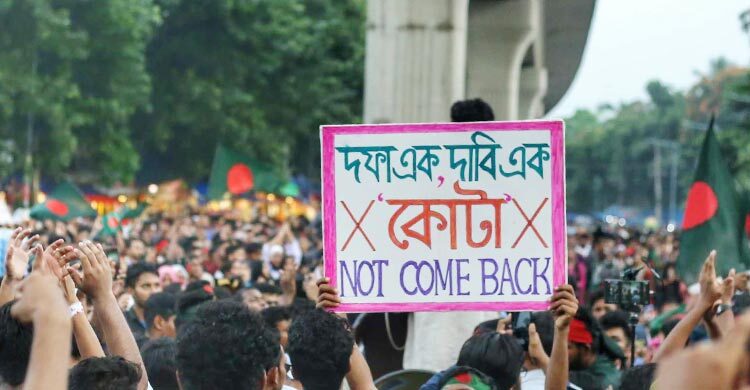The Quota Reform Protest In Bangladesh
The Quota Reform Protest In Bangladesh
In recent weeks, Bangladesh has witnessed the outbreak of massive protests and demonstrations, unlike those witnessed in recent years, on the contentious issue of the country’s quota system in government jobs. The quota system, designed to ensure equitable representation for disadvantaged groups, has become a flashpoint for debates on fairness, meritocracy, and social justice in Bangladesh. Among them, the freedom fighter quota that is the reservation of government jobs for freedom fighters (muktijoddha) a significant aspect of the country’s public service recruitment policies, established to honour the contributions of those who fought for Bangladesh’s independence in 1971, has become a focal point for debates on equitable representation and opportunities, fair access to government jobs, and the evolving nature of national policies. What started as a student movement has rapidly evolved into a nationwide call for reform, drawing widespread attention and prompting significant government response.
In 2018, a massive protest broke out when students at public universities countrywide demanded reform to the quota system. They claimed that the 56 percent reserved quota does not fairly consider the merits and the vast number of applicants who remain outside the quota criteria. They were especially concerned about the 30 percent reserved quota for the freedom fighters’ children and grandchildren.
On June 5, 2024, the high court of Bangladesh reinstated the quota system in response to a writ submitted by a freedom fighter descent. The verdict mentioned that the quota abolishment was “unconstitutional, illegal, and ineffective.” The quota system was back, as if nothing had happened. The students did not take it easily. They have again gone to the streets to protest the return of the quota system, an issue they thought had been resolved. The protests started at the University of Dhaka, arguably the country’s best and most historical university. Soon, students at other universities followed suit, and the protests, for the second time within six years, turned into a nationwide movement.
At first, ruling party politicians and the government were dismissive, saying they had nothing to do with the quota reinstatement, as the order came from the country’s highest court. There was also an argument that the protestors should wait until the appeal hearing, which was set for August 7. But the protesters were not ready to listen. They wanted Prime Minister Sheikh Hasina to reassure them and act. Following her remarks, thousands of students from the Dhaka University student dorms came out to the street and started shouting a slogan which can be translated as “Who am I? Who are You? Razakar, Razakar. Who said that? Who said that? Autocrat. Autocrat.” The accumulation of all these factors created mass anger among the youth and the nation’s general population.
So, of course, the protest movement might not remain the same as when it started, with the agenda of reforming the quota system alone along with demolishing the autocratic government. Finally the will of the present generation establish whereas the Ex-Prime Minister was bound to escape after resigning from the post. To conclude, Bangladesh is facing a unique situation at present. The government announced a nationwide day of mourning on 30 July to honour those who lost their lives in the recent violence.

